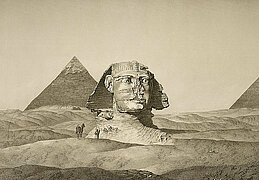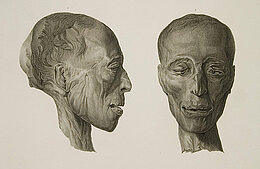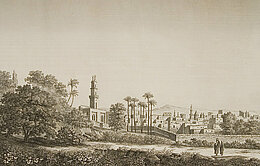The Library holds a unique collection of engravings - "Description de l'Égypte, ou Recueil des observations et des recherches qui ont été faites en Égypte pendant l'expédition de l'armée française" or “Description of Egypt, or the collection of observations and researches which were made in Egypt during the expedition of the French Army”, published by Institut d'Égypte (founded by Napoleon), the 2nd edition, Paris, 1821-1829. Large-scale prints depict pyramids, temples, sculptures and bas-relief moldings, hieroglyphics, plants, animals, cities and town maps.
The historically illustrative and artistically valuable engraving collection was created by French scientists during Napoleon’s expedition to Egypt in the time frame from 1798 to 1801. These engravings are a collaborative result of more than 150 famous scientists who accompanied Napoleon during his expedition to Egypt. Later, with the help of about 2000 artists, cartographers, typesetters, as well as 400 engravers, this now known collection was formed. It consists of 37 volumes (929 items), engravings are monochrome, except for the first plate which is magnificently coloured.
Items can be ordered via Union catalog, to be received at the Library at Raiņa Boulevard.
The engravings can also be viewed within the virtual exhibition “Five moments short of a century: Treasures of the Library”, created by the Library of UL.

 CONFERENCE
CONFERENCE

